I was searching for a less noxious alternative to latex-based masking fluid when I heard of people using gum arabic as a mask or resist. Gum arabic, a plant resin used as a binder in watercolors and also a food ingredient, would certainly be less noxious. But how well does it work?
I made two paintings to assess the challenges of using this water-soluble mask. One with acrylic—my long-time medium of choice—and one with watercolor, a medium still new to me. You can see the steps and results of both paintings below, as well as an early test.
My observations gum arabic masks:
- Gum arabic is non-toxic and odorless, whereas I found the ammonia smell from the latex difficult to tolerate.
- Gum arabic is water-soluble, which presents challenges when painting over it. Too much water and agitation with the brush will dissolve the mask. It is a matter of getting to know how much pressure is too much. An alternative that reduces this risk is to apply paint by dabbing with a sponge or by spraying (provided the paint mixture is not too watery).
- I found the gum arabic mask easier to apply than latex; it requires neither constant brush-cleaning nor the use of a face mask or ventilation.
- Gum arabic masks are more difficult to remove than latex masks (which you can simply lift and peel), but removal was less of a pain than I anticipated. It requires a lot of wetting and blotting—NOT scrubbing. I used a brush to wet, a cotton t-shirt rag to blot.
- Gum arabic masks can be used atop watercolor layers, though I do not recommend they be applied over details meant to remain crisp. Care must be taken not to scrub when removing the mask, as this will lift the color below. The more staining your watercolors, the better they will stand up to the mask removal process. The watercolors I used for my blue fairy below are low-staining. (With acrylics, permanent as they are, this is not an issue.)
Gum arabic has limitations when compared to liquid latex, but I would urge any artist to try it. It’s a time-tested art material, it’s non-toxic, and you might enjoy the softer edges that it produces particularly if you paint subjects of an ethereal nature.
For myself, I’m eager to continue my tests and find out whether I can achieve a result that mimics my recent poured watercolor paintings.
Early Test:
Two kinds of watercolor: on the left, cheap but high-staining. On the right, artists quality but low-staining. Gum arabic mask applied on top.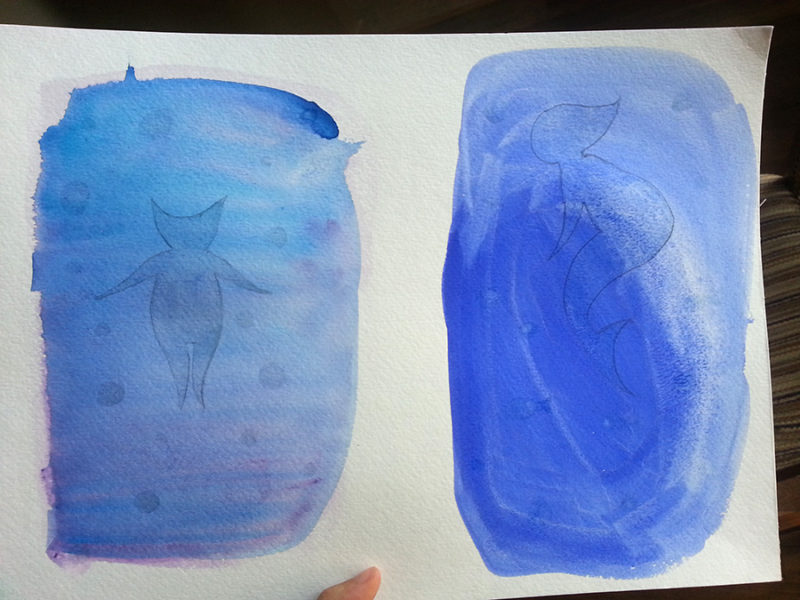
Paint brushed sloppily over both samples.
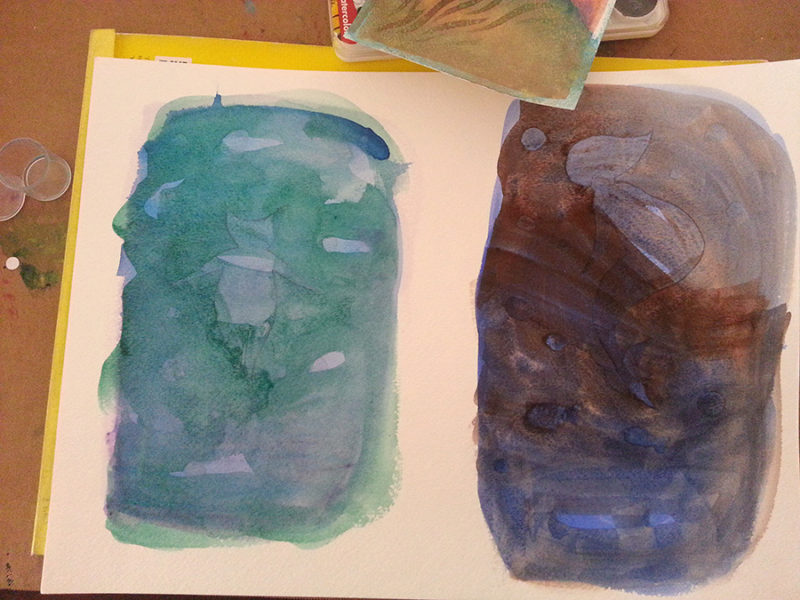
The result with mask removed.
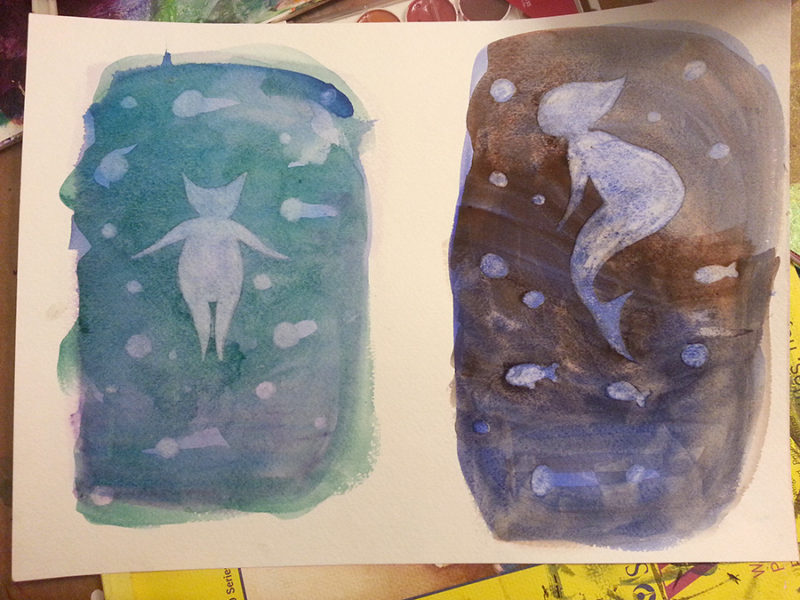
Now, for a more detailed application.
Acrylic Painting with Gum Arabic Mask
First I drew my image and transferred it to the paper over a simple background. Then I painted initial details: face, hair, hands, flowers on robe.
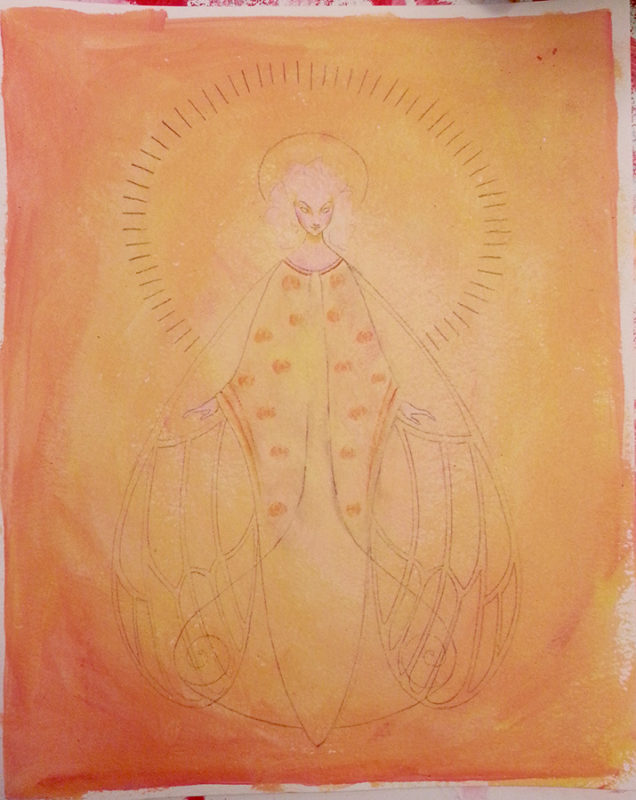
Below I’ve painted the legs, then applied gum arabic over the legs, robe and wing veins.
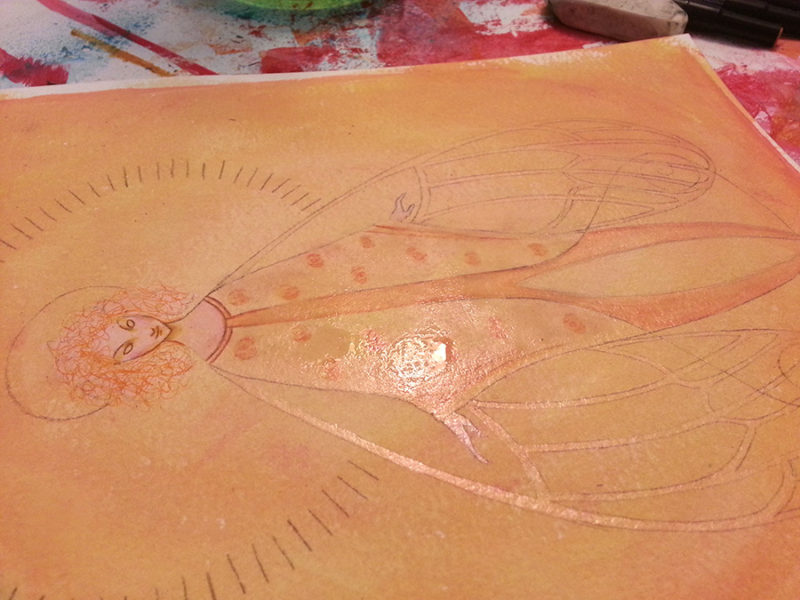
With the gum arabic dried, I painted a layer of orange behind the legs and part of the wings. Once that dried I applied gum arabic to the hair, face and neck.
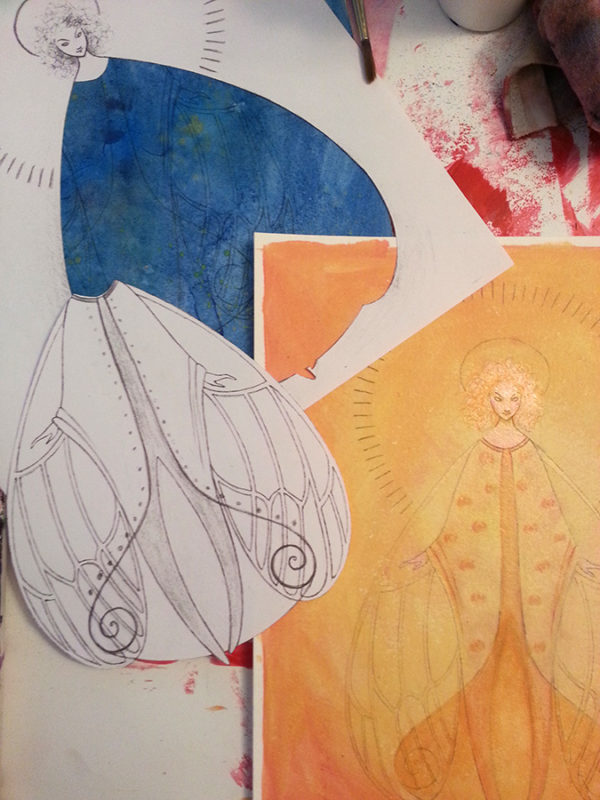
Note: I overworked the edge where this paint meets the leg. I wanted to see how much I could brush over the gum arabic without affecting it; I did not think I was being aggressive, but the new paint did breach the mask.
I photocopied my drawing and cut a paper mask from it. I did not want to attempt gum arabic over a large area because I don’t have the patience to remove that much of it without scrubbing (and you want to dab, not scrub—albeit moreso with watercolor). I sprayed acrylic paint over the paper mask.
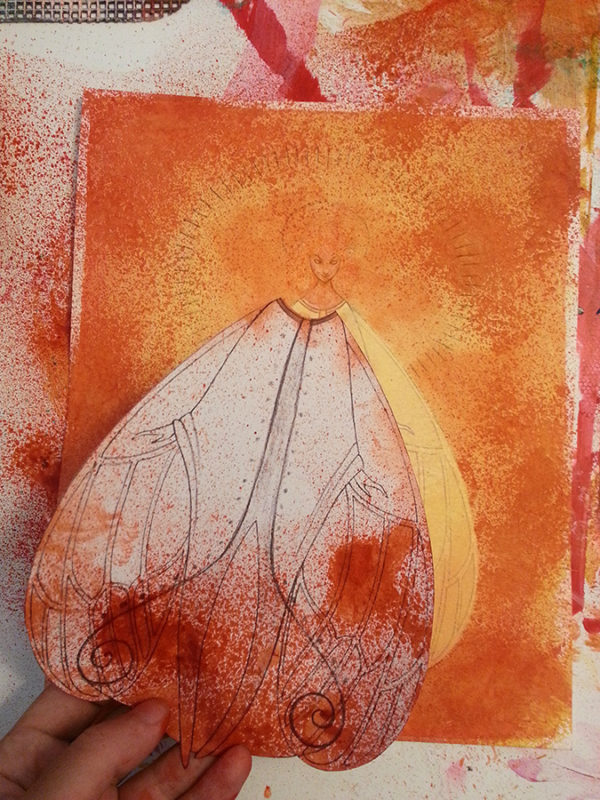
I sprayed a green tone to the bottom of the wings using the other part of the paper mask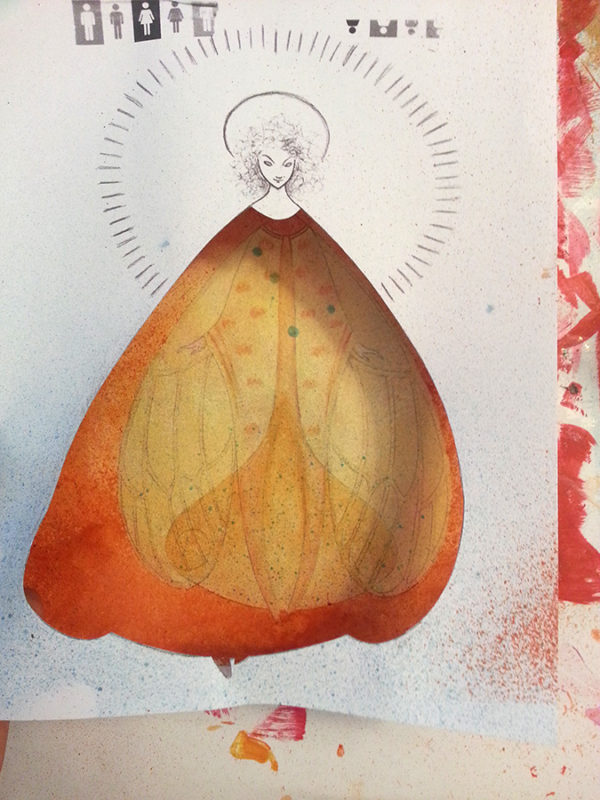
Then I spattered some more green onto the background

Finally I removed the gum arabic. You can see on the inner edge of the thighs where the mask broke down under my brushstrokes. I tried three methods of paint application: brush, sponge, and spray bottle. The spray in general damaged the mask the least, though you can see on her robe where the green spatters got through; I think it’s because that paint mixture was rather watery. I used sponge application to darken the area around the hair and it does not seem to have disturbed the mask in that area. I brushed over the wing veins on the bottom where the robe flares out to overlap them. I also brushed over the legs. I recommend spraying or sponge-application where possible, though brush application can work if not overworked.

Close-up of the brush-damage on the right inner thigh.
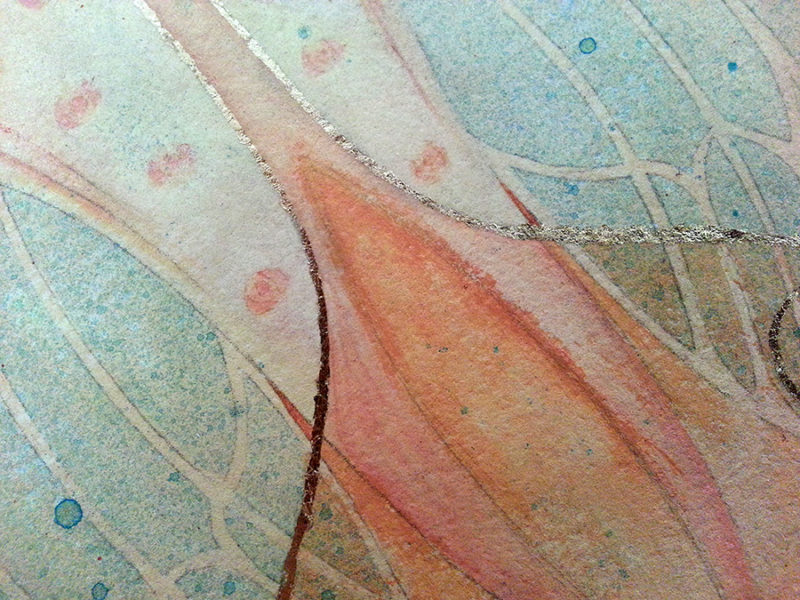
I completed the painting with a few small touch-ups and the addition of gold leaf.
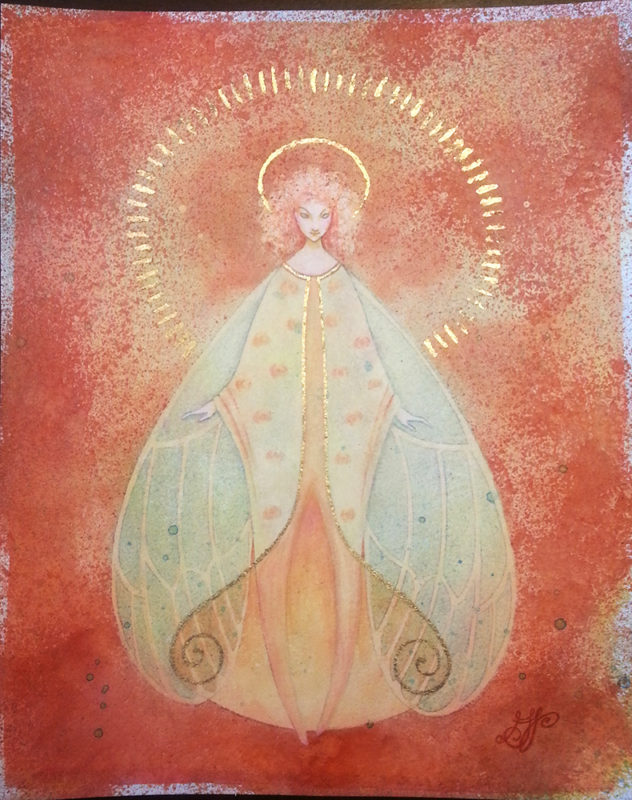
Watercolor Painting with Gum Arabic Mask
I transferred the drawing to watercolor paper, then stained the background with a diluted watercolor spray.
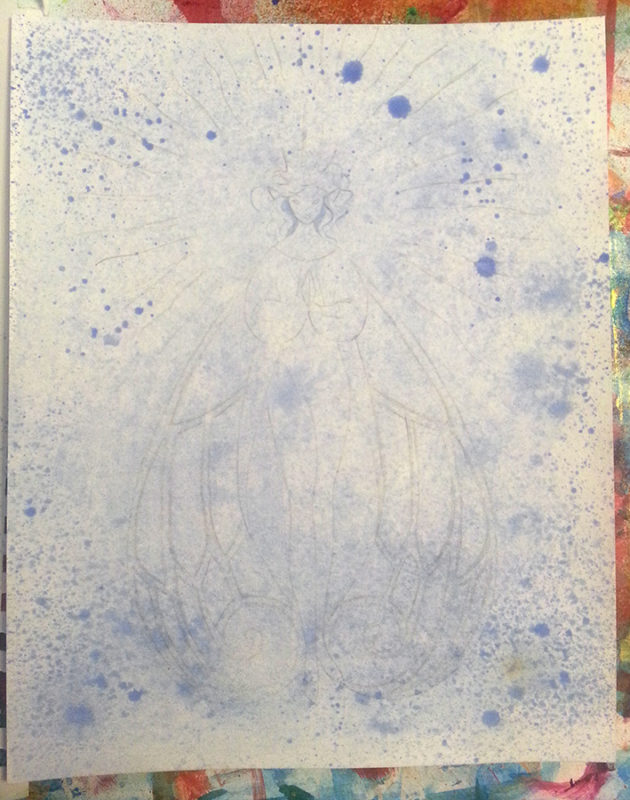
Then I applied a gum arabic mask to the wing veins, face, and hands. Allowing that to dry, I reinforced some lines with blue pencil. Then I sprayed on another layer of blue watercolor (I also sprayed with water to soften the effect).
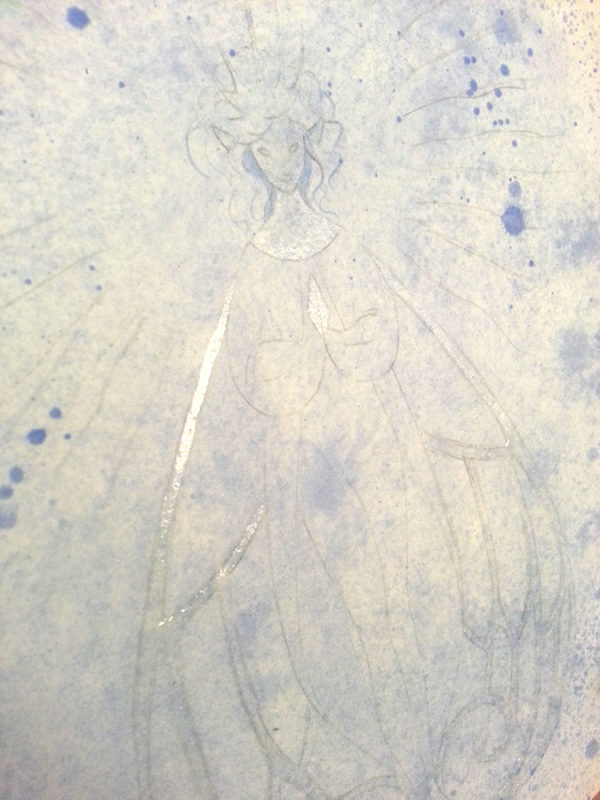
Next I masked the outer robe with gum arabic, let that dry, and sprayed more blue watercolor.
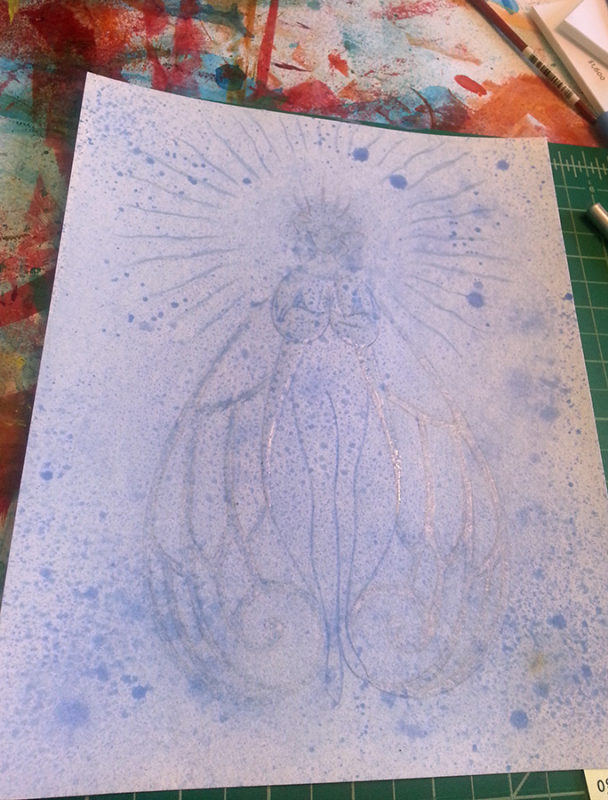
I cut paper wing masks from a photocopy of the drawing and sprayed again with the wings covered. (Of course you have to spray quickly with this method as wet copy paper will curl!)
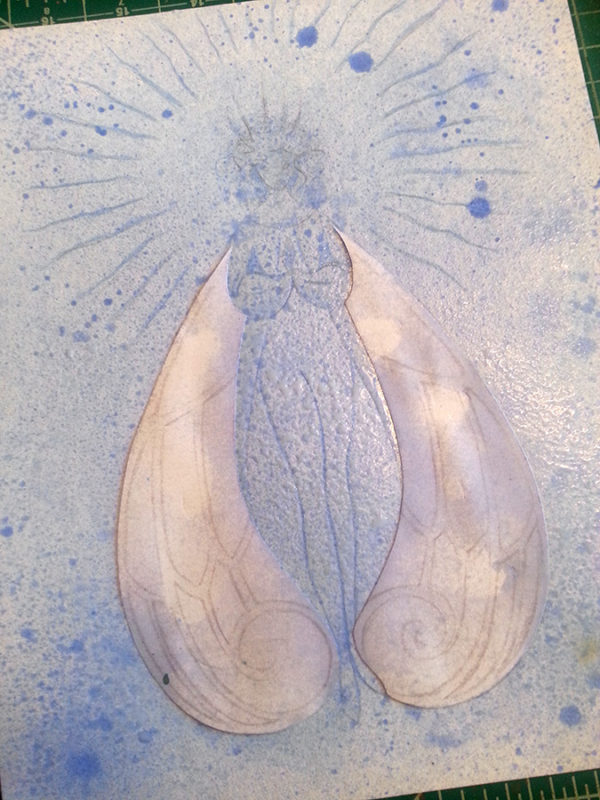
After this dried, I masked the legs and torso. Then I used my wing masks again, holding them carefully in place while I sprayed with equal care to darken the inside of the open robe.
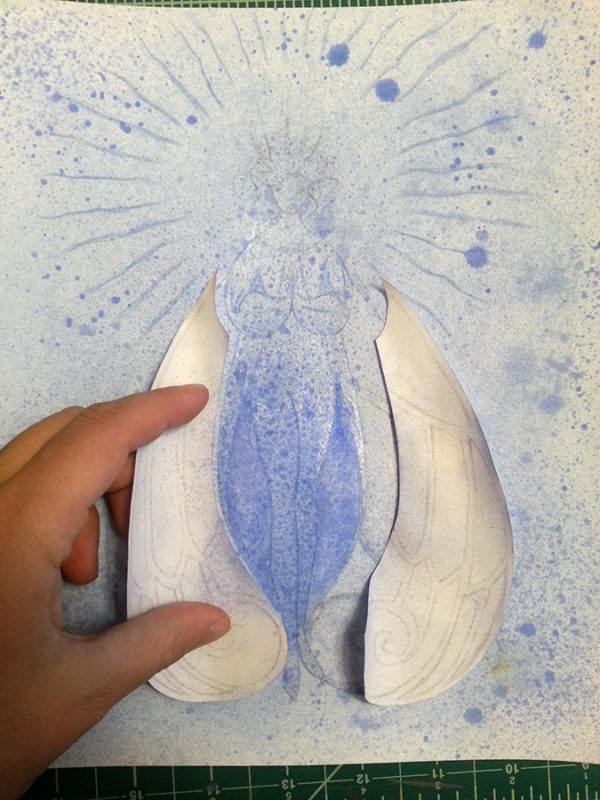
I used a paper mask to spray green watercolor onto the wings
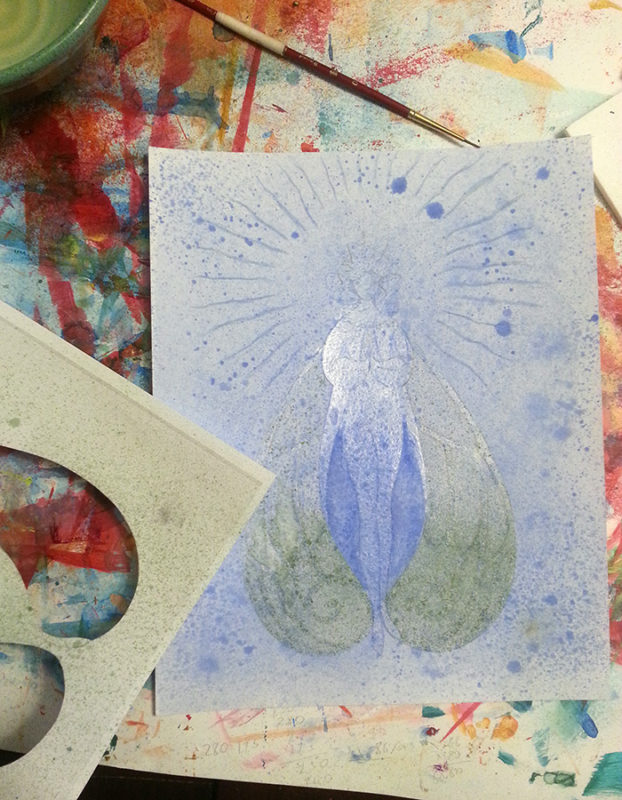
Then I removed the gum arabic and attended to details. Moreso than with the acrylic, it was important to moisten then dab with cotton (I used a rag) to lift the gum arabic. It was important not to drag across the surface, lifting the adjacent or underlying paint.
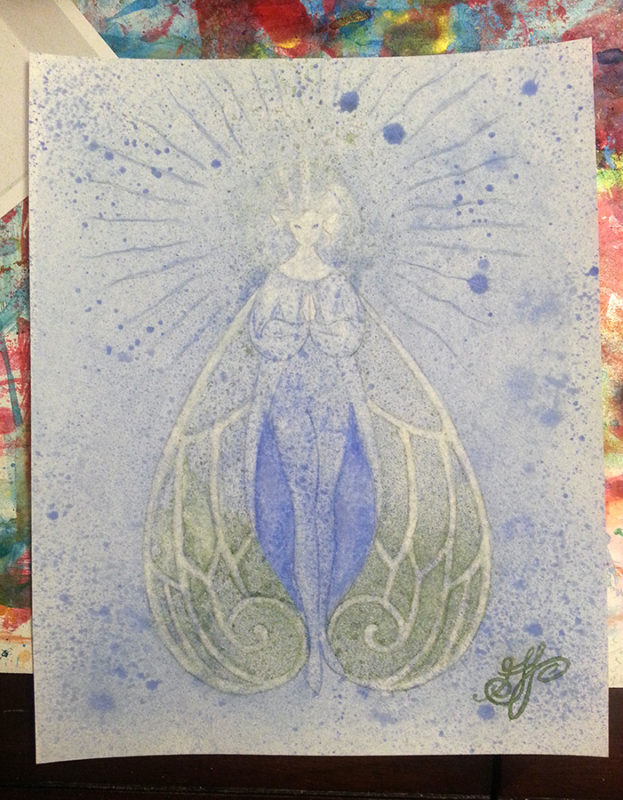
It seemed the background was a bit light, so I mixed some ultramarine blue with natural red, diluted, in a spray bottle and cut out a paper mask of the entire figure (for the hair I attached a frayed cotton ball). I sprayed paint and dabbed at it with a sponge to soften the effect until I was satisfied.
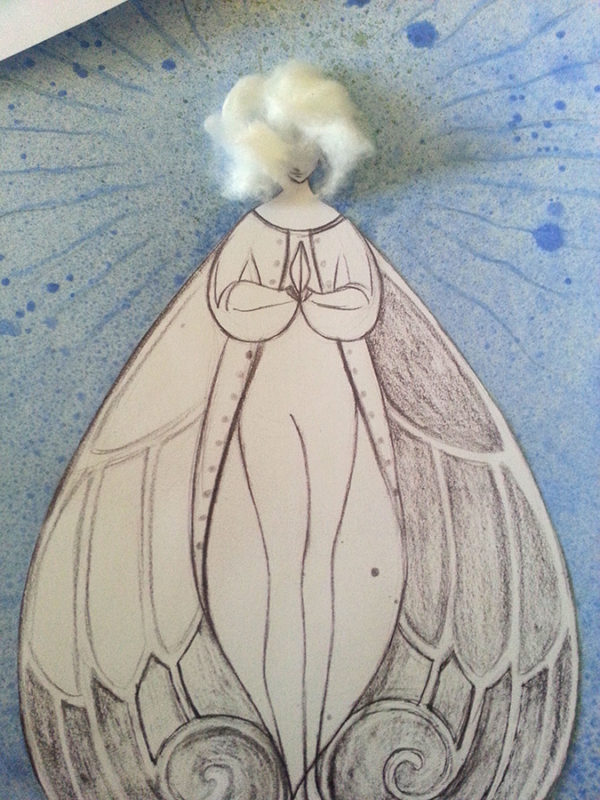
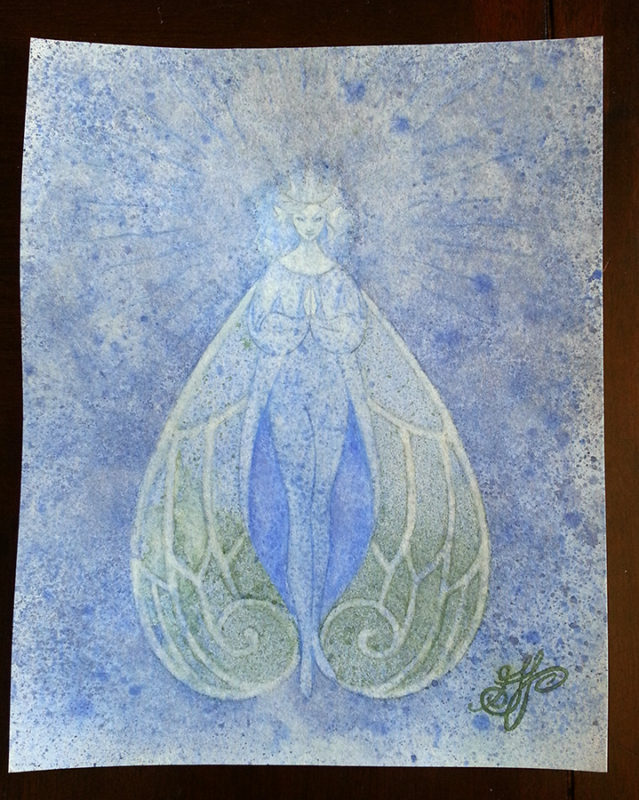
As above, the final touch was to add gold leaf.
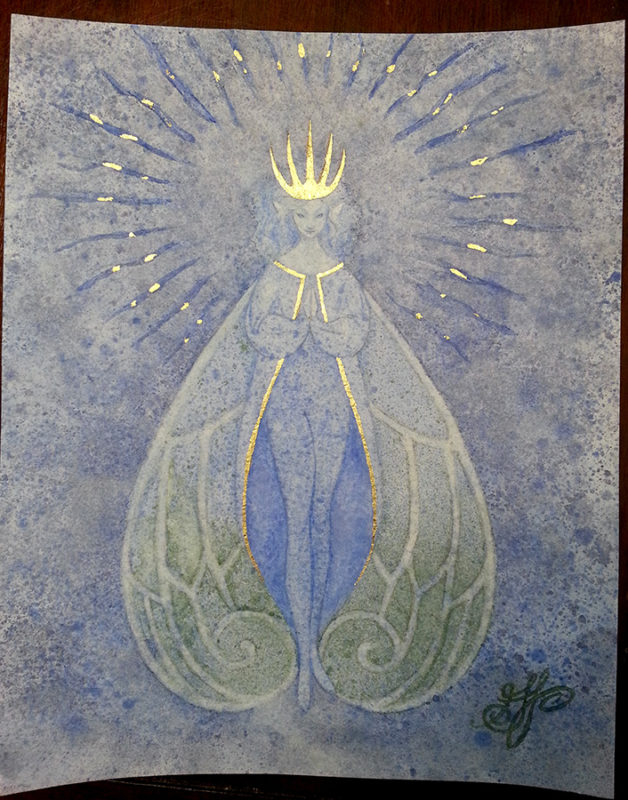
Detail:
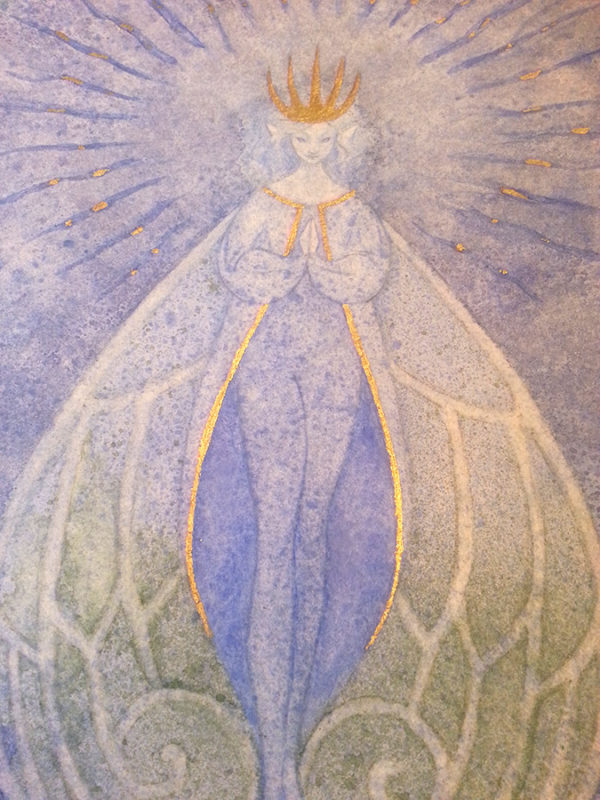
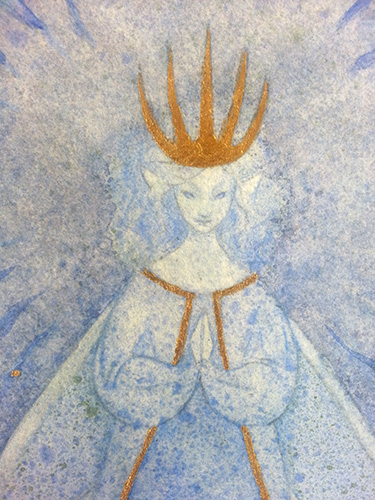



Lovely art work, and I am glad that you have an article on the alternative method of masking w/gum arabic. I am not a fan of traditional latex mask my self.
Thanks, Claudia! I was intrigued lately to learn that batik wax is used as a resist on paper as well. It had never occurred to me.
very nice and unique art